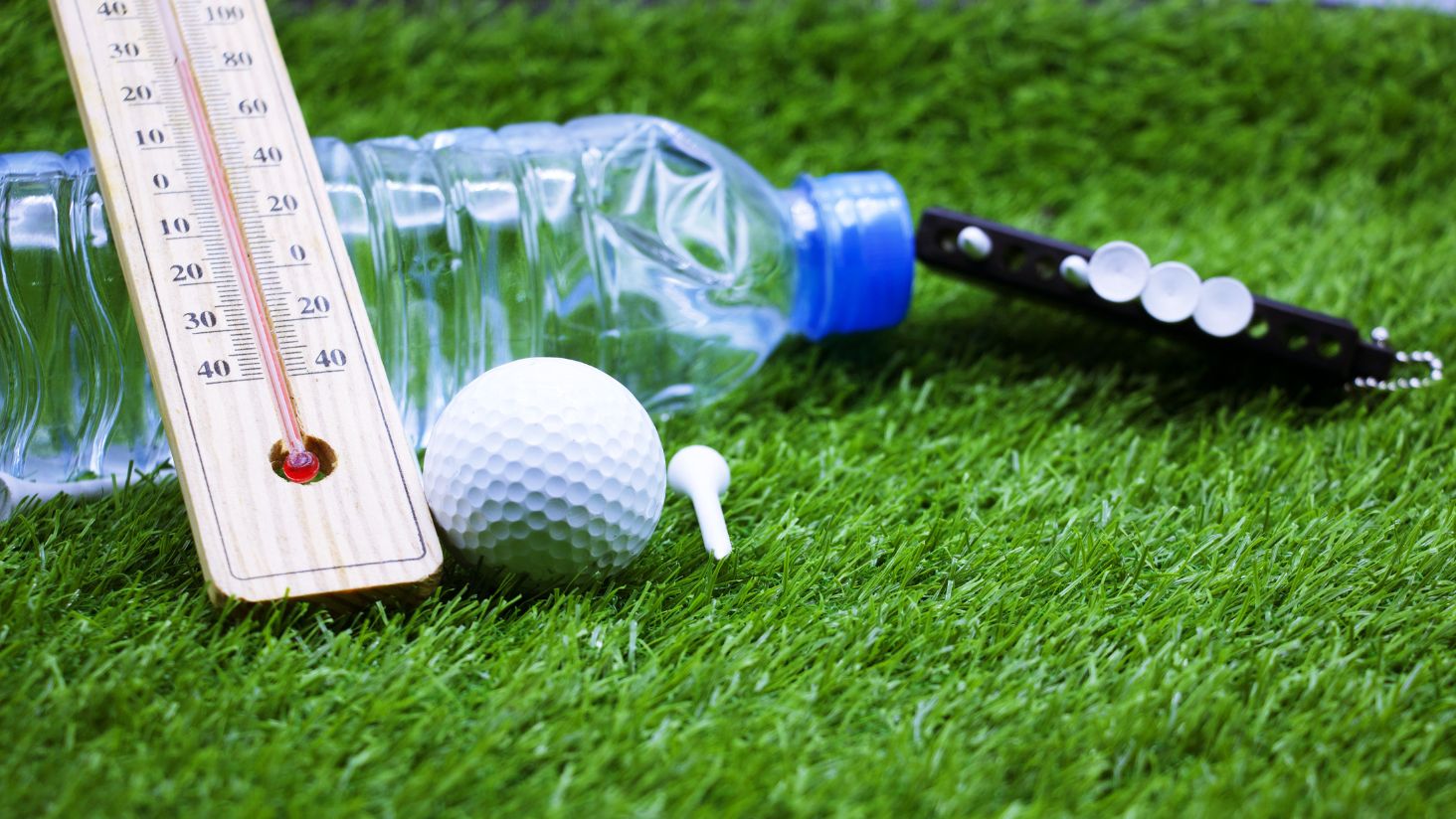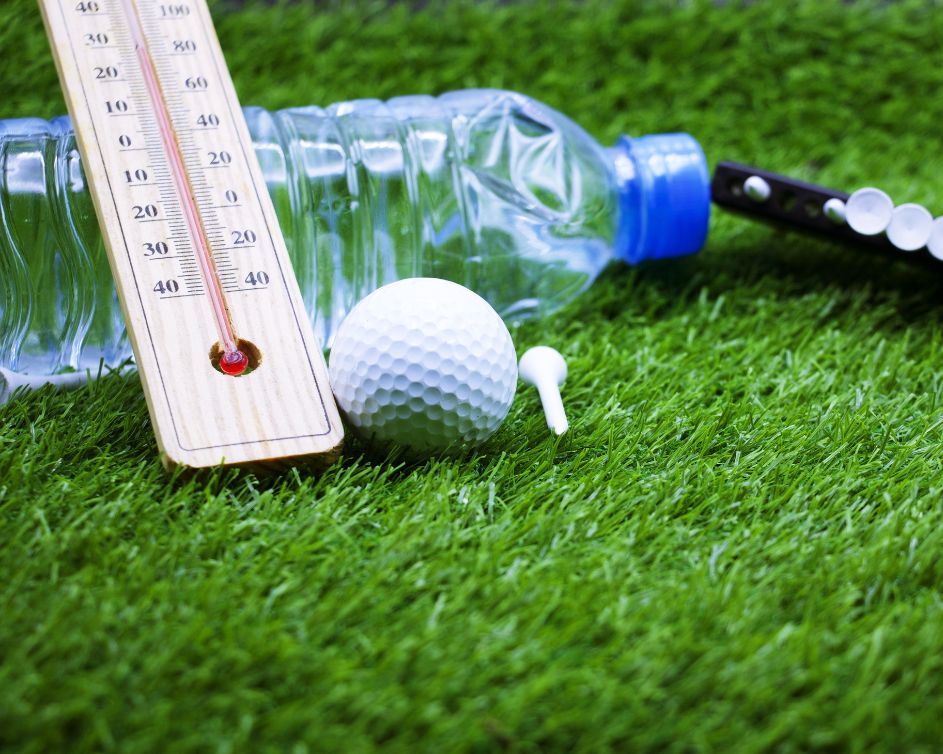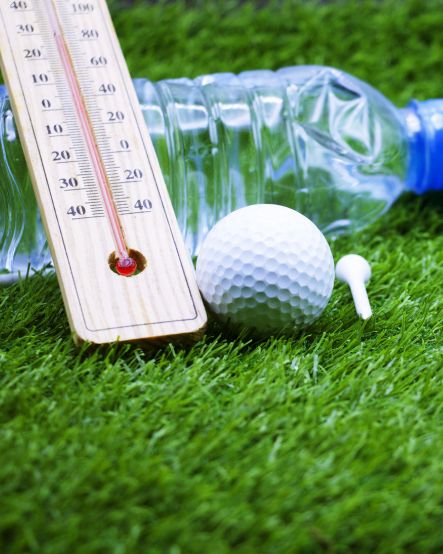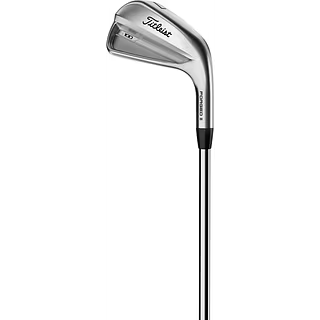


Staying cool on the golf course: your guide to golf on hot days
Hot days on the golf course are no longer a problem! Discover important tips for skin protection, hydration and energy. So you can play safely even in the height of summer.
When the thermometer rises and the sun blazes down from the sky, the golf course turns into a real challenge. But with the right preparation and adapted strategies, you can enjoy your round even on hot days and improve your game without putting your health at risk. This guide provides you with the most important tips to beat the heat and sun on the golf course.
Sun protection on the golf course
Protecting your skin from UV radiation is a top priority. A round of golf lasts several hours and the sun can be merciless - even when it's cloudy or reflecting off water surfaces, for example.
Sunscreen is a must: apply a generous amount of sunscreen with sun protection factor (SPF) 50+ at least 30 minutes before teeing off. Make sure you use broad-spectrum protection (UVA/UVB). Reapply every two hours to maintain protection. Don't forget often forgotten areas such as ears, neck, hands and back of hands.
The right clothing makes all the difference: opt for light-colored, lightweight and breathable fabrics. Special UV-protective clothing (with a UPF rating) is ideal, as conventional lightweight fabrics such as linen do not block UV rays sufficiently - you would also need to apply cream under your clothing. Long sleeves and trousers made of breathable material can actually be cooler than short, thick cotton clothing.

Protect your head especially
Headgear is essential to protect your face and head. A wide brim or a cap with neck protection are the best options here, even if they may take some getting used to visually. Men with bald heads and scalps are particularly susceptible to sunburn. Sunglasses with proven UV protection from an optician protect your eyes from harmful radiation and reduce glare.
After your round, cool your skin with après lotions or water-based aloe vera gel to dissipate the heat and soothe the skin. Have regular skin cancer screenings if you are frequently exposed to the sun.
Hydration: the fuel for your performance
A balanced fluid balance is the key to your concentration and performance. If you feel thirsty, you are already slightly dehydrated. Start the round with a balanced fluid balance. Drink plenty before you tee off. Consume small amounts of liquid continuously during the round, ideally two to three sips at each tee. This avoids overly full bladders and ensures constant hydration.
Your individual fluid requirements depend heavily on the ambient temperature, humidity, wind and your personal sweat rate. As a rule of thumb, you may need up to 400-800 ml per hour in hot weather. Check the color of your urine - it should be light yellow. Dark urine is a clear sign of dehydration.
Water is always the best choice of drink. An apple spritzer in a ratio of 2:1 (two parts water, one part apple juice) is also an excellent sports drink. If you sweat a lot, sports drinks with electrolytes can be useful to replace lost minerals such as sodium, potassium and magnesium, which are important for muscle function. Avoid ice-cold drinks as your body has to expend extra energy to warm them up to body temperature, which can lead to more sweating. Cool drinks are better. Avoid sugary sodas and alcohol. They can have a dehydrating effect and make you tired rather than fit.

Energy balance: stay on Tour
A round of golf, especially on foot, can burn up to 2000 calories. Your body needs constant energy to stay efficient. About three to four hours before you tee off, you should eat a meal rich in long-chain carbohydrates and fiber (e.g. whole grains, potatoes, oatmeal with fruit). This fills your glycogen stores and keeps your blood sugar levels stable. Supplement this with a small portion of protein (e.g. yogurt, quark, lean meat). A smaller, carbohydrate-rich shake is suitable for early start times.
Eat small, easily digestible snacks regularly during the round. Ideal are 20-30 grams of complex carbohydrates such as muesli bars, bananas, dried fruit and nuts. Fruit loaves or sandwiches with lean cream cheese and honey are also good options. Heavy, greasy meals put additional strain on the body and can lead to digestive problems, fatigue and increased sweating. Light foods such as watermelon or a light salad are better.
After the round, you should replenish the calories you have consumed. Especially if you play again the next day, a combination of carbohydrates and proteins within an hour of your round is important to replenish glycogen stores and regenerate your muscles. Pay attention to the amount of fat in your meals.


Smart strategies for hot days
In addition to skin protection, hydration and nutrition, there are other factors that can help you stay cool on hot days.
- Adjust start times: If possible, book your start time early in the morning or late afternoon to avoid the intense midday heat (around 11:00 am to 3:00 pm).
- Use the shade: Seek shade whenever possible, whether it's by hitting from shaded areas, using a cart (provides shade and is easier on your stamina) or setting up a golf umbrella.
- Cooling from the outside: A second, damp towel around your neck or cooling thermal sprays can provide refreshment in between.
- Keep your hands dry: Take several changes of golf gloves with you to keep your palms dry and maintain a good grip.
- Recognize physical signs: Watch for symptoms such as dizziness, nausea, headaches, cramps or extreme fatigue. These can be signs of heat exhaustion or heat stroke. In this case, seek shade immediately, cool down and get medical help.
- Realistic expectations: Accept that your game may not be at your highest level in extreme conditions. The focus should be on your well-being.
With these precautions, you are well equipped to play a successful and above all healthy round of golf even on hot days. For many golfers, summer is the ideal time to get out on the golf course as often as possible - enjoy it!


Release date
20 Jun 2025
photos
On hot days, you need to be well prepared for the golf course. (Photo: Adobe Stock)
